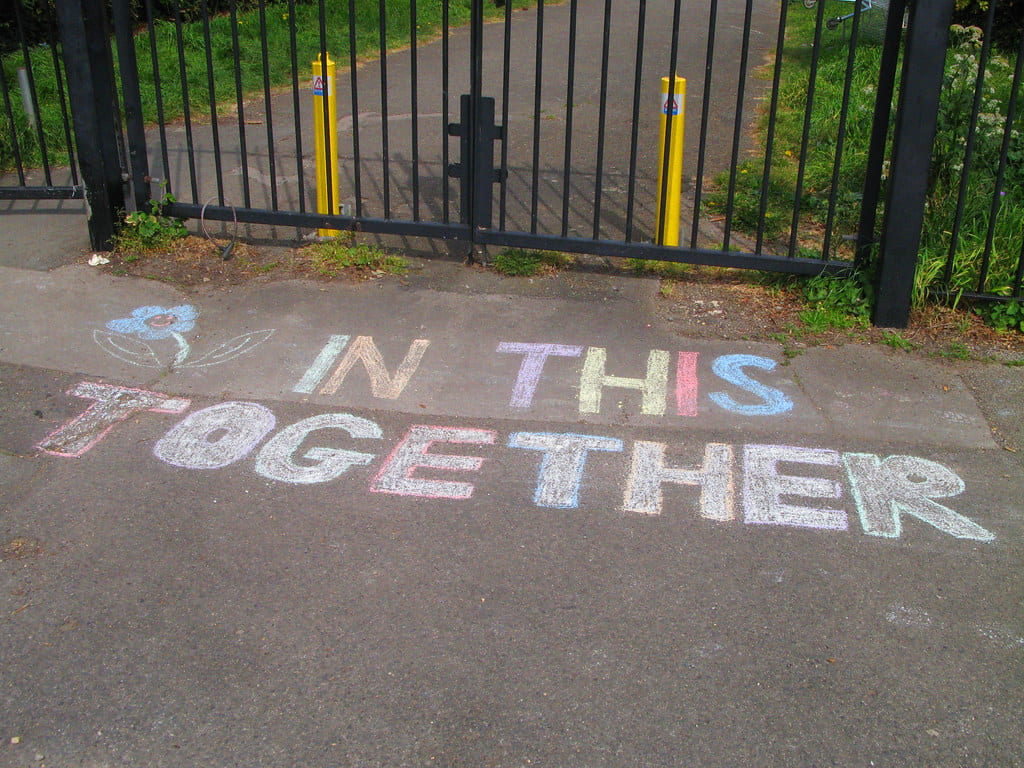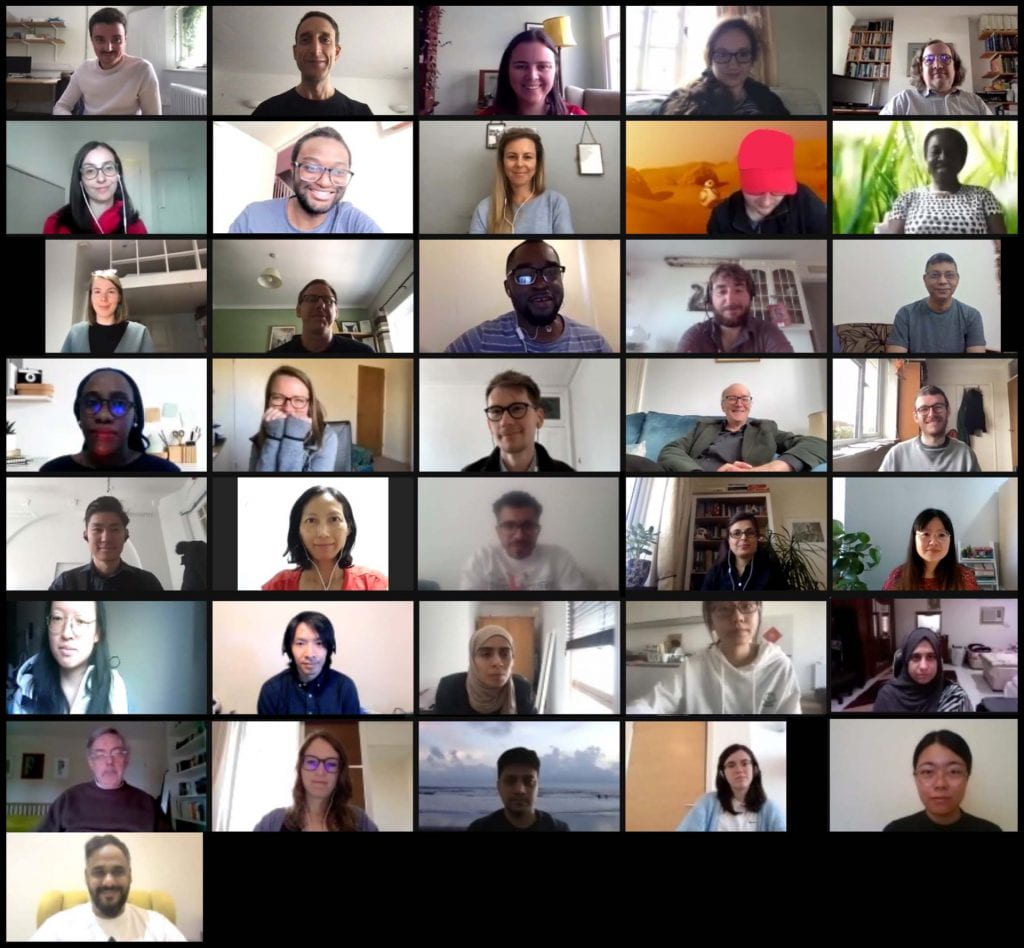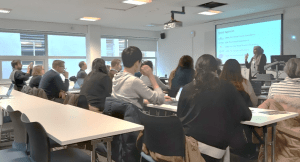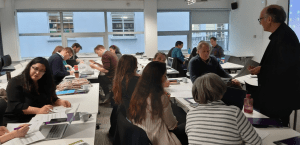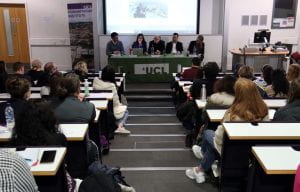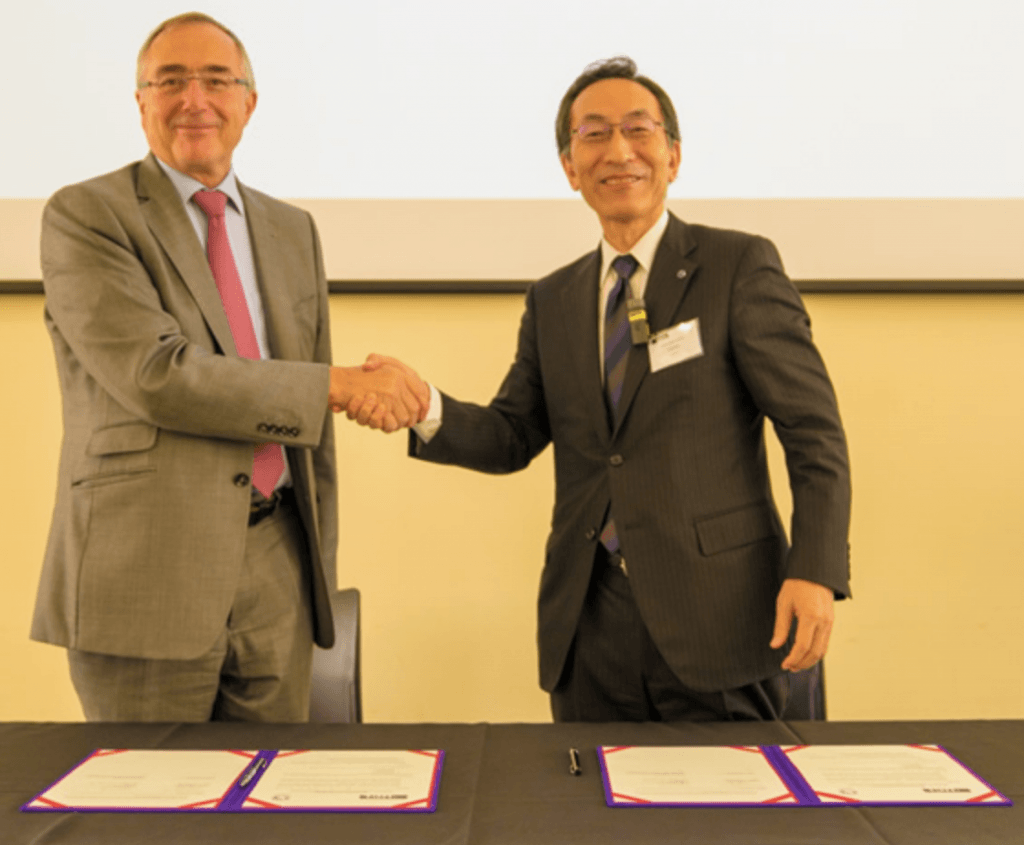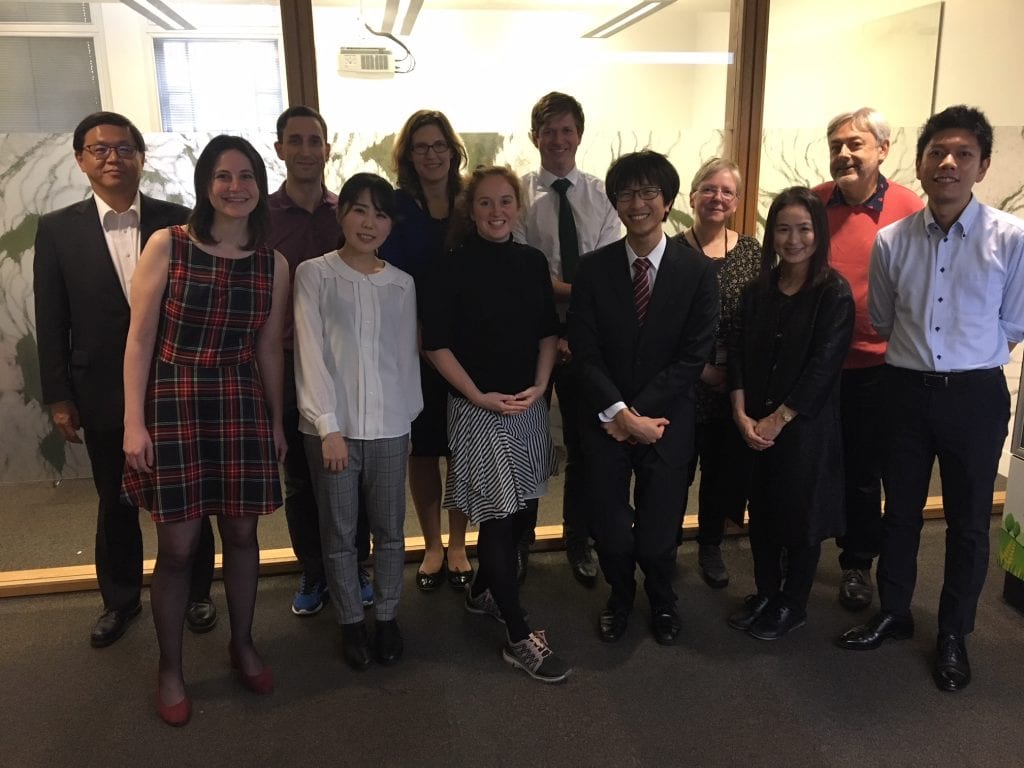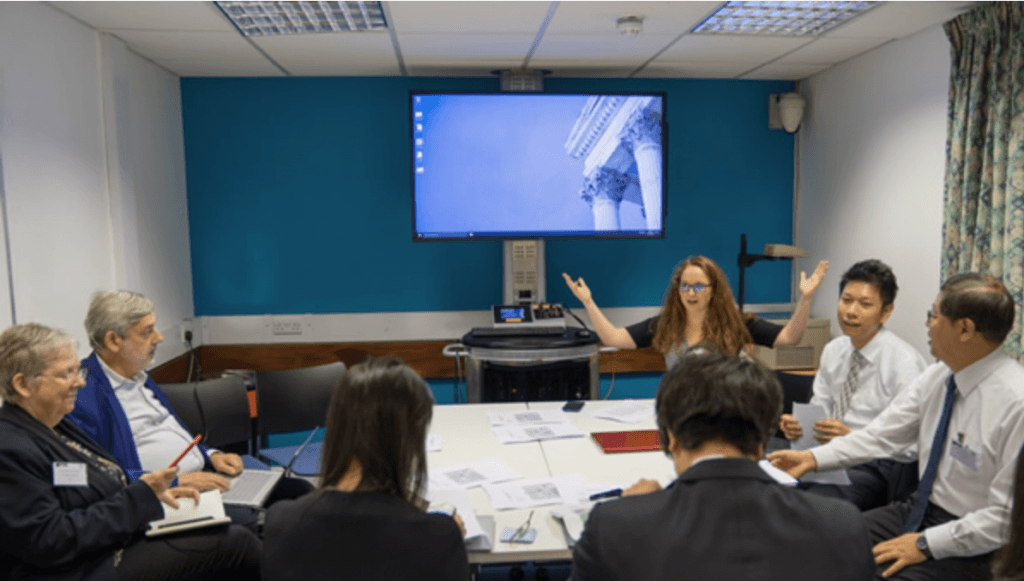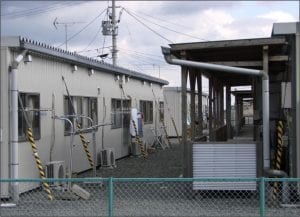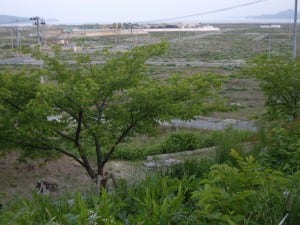Mutual Aid: Community Power During a Pandemic
By Joshua Anthony, on 24 May 2021
In times of crisis, it is common to see the union of communities overcome the unique challenges that each disaster brings. Following the 2015 earthquake in Kathmandu, neighbours and relatives were rescued from building debris by locals immediately on the scene, while others set up temporary shelters for those in need. Independent tech-wizards during the 2010 wildfires in Russian built an online ‘help-map’ which pin-pointed danger zones and platformed aid-requests and -offers during the event. Most notably reported by the media, the Occupy Sandy group, which emerged in response to 2012’s Hurricane Sandy, could boast an impressive twenty thousand meals a day delivered to those in need.
Now, as the world collectively lives out a disaster, through the course of which its citizens have been told to socially distance and clinically vulnerable individuals advised to stay indoors at all costs—even for shopping and pharmacy visits—it is now that the power of and need for community action has become increasingly evident.
23rd March, 2020, British Prime Minister, Boris Johnson, announced the start of England’s first nationwide lockdown. By the next day, NHS England had launched their “rallying the troops” campaign, urging the English people to help their neighbours and families who were shielding with medication pick-ups, hospital visits and over-the-phone support. Such a call-out from the national healthcare service suggests it is ordinary people who are acknowledged to hold the power to tackle these wide and unique circumstances. Short of a Braveheart-esque ignition of national pride, one can commend the efforts of NHS to recognise and utilise the dormant community resources—but Community had already gotten there.
As early as the 12th March—before Matt Hancock’s address to parliament on the 16th March advising people to reduce “unnecessary” social contact—locally-led, self-described “Mutual Aid” support groups had begun to form across London. They offered a wide range of assistance for everyday needs such as grocery shopping, medication pick-up, and providing information and advice, and emotional support; and more bespoke aid was provided, including: technological repairs, online ordering, facemask distribution and flower deliveries—though, this list is surely not exhaustive.
By the sheer speed and timely nature of this community action, one is left wondering whether inadequacies within the institutional emergency response frameworks are what spurs communities on to take the direct action seen here.
Previous research shows that the emergence of new crisis response groups, the “emergent group” is the result of fresh challenges for which adequate facility to resolve them is not present or immediately available within existing institutions. In many disasters, this is a common feature that occurs at the early stages of the disaster cycle [1]. Uniquely, it appears as though some mutual aid groups, which in line with the emergent group research, formed at the beginning of the pandemic in March, 2020, have either maintained support or reactivated as the situation progressed and further lockdowns were imposed. This sustained activity is indicative of an environment whereby the needs of society have been continually supplemented throughout the crises by the work of grassroots groups.
To facilitate their operations, mutual aid volunteers were making posters, leafleting, researching information, translating, coordinating other volunteers, managing community finance pools and running phone-in services. And though there was some seeming structure of administration and coordination, an important principle that underpins much of these groups’ organisation was that they were non-hierarchical, independent and self-organising. More generally:
“Mutual Aid as a mode of organisation refers to a horizontally structured relationship between voluntary participants from which help or aid are available mutually and free-of-charge between parties, at each’s own discretion, in the face of adversity—most commonly a shared one— unsanctioned by an overriding authority.” [2]

Figure 2. Mutual Aid finds it roots in Peter Kropotkin’s “Mutual Aid: A Factor of Evolution”, exploring concepts of mutually beneficial cooperation within societies. The text is widely cited within anarchist literature. “Mutual Aid Mural” by eshutt is licensed with CC BY-SA 2.0
Groups existed at the Borough scale down through the town, ward and even residential building level, with each scale of locality maintaining independence through to the volunteers themselves (see Figure 3 for a schematic diagram). Each group was unique: some welcoming new members immediately, while others were more guarded and required postcodes and reasons for joining; some had clearer organisational structures with dedicated officers and coordinators; group admins contacted for questionnaires surveys varied in their willingness to allow researchers access to the groups, some feeling a duty of care towards their group members. Responses have helped shed some light on common themes of organisation and activity between groups [2], but it is their anarchistic and amorphous nature, which makes them so hard to track and study, that could be their key strength in fighting an emerging and changing situation such as the COVID-19 pandemic.

Figure 3. Chain of Mutual Aid group formation displaying spontaneous formation at all geographical levels, Borough, Ward and Neighbourhood, with horizontal autonomy at each group level down to individual volunteers [2].
All emergency response is local in effect, even when filtered through a centralised system: it is those on the ground that sort through the rubble, build the shelters and cook the food, not the ministers and policy makers. Mutual aid groups are no different, except that they have bypassed the centralised aspect of the emergency response chain and affected direct action. Looking at the impact they have had, it would be unwise to suggest that a rational integration of mutual aid groups and institutional emergency response would involve the placing of such groups within a hierarchical chain; rather, those in positions of power should acknowledge the legitimacy of their efforts and empower them through outreach and communication.
Fortunately, reaching out has been made possible through social media platforms such as Facebook and Whatsapp, which have given Mutual Aid groups operational power by allowing both those in need and able to help to communicate and coordinate online. Where the emergence of citizen groups typically relies on prior social networks [5], online networking has facilitated the quick establishment of community ties while also conforming to social distancing guidelines. Additionally, for interested researchers, a surprising benefit of online group presence is that group information and membership numbers were made accessible (in most circumstances), allowing for the gathering and analyses of emergent group data that could otherwise be too transient or chaotic under regular disaster conditions.
Analysis of borough-level mutual aid Facebook groups reveal that membership numbers are somewhat correlated positively with the percentage of those aged 25-34 years of age, and negatively with borough crime rates and the percentage of those classified by Government statistics as BAME (black and minority ethnic) [2]. However; explanations for these results can only be speculative. The National Council for Voluntary Organisations has estimated that the predominant ages of volunteers generally tends to fall within the bracket of 65-74 years of age, while those least likely to volunteer were in the 25-34 bracket; however, the risks posed to the older populations from COVID-19 is likely to have turned this balance on its head. Similarly, research has suggested that ‘BAME’ community members could be at a greater risk to COVID-19 [6], which, alongside key factors such as involvement in key worker jobs and family caring responsibilities, could limit availability for participating in mutual aid group activity.
Other independent Borough socioeconomic factors such as the index for multiple deprivation, household earnings, and internet usage did not produce significant correlations, but the analytical power of the modelling approach is limited by sample size and the informal nature of Mutual Aid groups—especially within a crisis—that makes the navigation of data difficult [2].
Though results are inconclusive and liable to error, current research efforts show that there is opportunity to better understand the phenomena of emergent mutual aid groups, which could enhance the effectiveness of their intentions in future times of turmoil. To these eyes, there are two alternate visions tugging against each other: one, where community power is harnessed and nurtured by emergency planners and institutions; and two, where institutional responses are effective enough to preclude the necessity for citizen action.
One thing this pandemic demonstrates for certain is that the subjects of disaster are not passive recipients of aid and can and have participated in affecting vital response. Time and time again we are reminded that chaos is not an inevitability of hardship, and that, when duty calls, communities have summoned the power that lies dormant beneath their lines in order to tackle catastrophe together.
References
[1] Twigg, J., & Mosel, I. (2017). Emergent groups and spontaneous volunteers in urban disaster response. Environment and Urbanization, 29(2), 443–458. https://doi.org/10.1177/0956247817721413
[2] Anthony, J. (2020). Modelling the Emergence of Mutual Aid Groups in London (UK) during the 2020 Covid-19 Pandemic.
[3] Alexander, D. E. (2016). How to Write an Emergency Plan (1st ed.). Edinburgh and London: Dunedin Academic Press
[4] Tiratelli, L. & Kaye, S. (2020). Communities vs. Coronavirus. The Rise of Mutual Aid. New Local Government Network
[5] Quarantelli, E. L. (1984). Emergent Citizen Groups in Disaster Preparedness and Recovery Activities. Final Project Report #33, University of Delaware Disaster Research Center. http://udspace.udel.edu/handle/19716/1206
[6] Race Disparity Unit, Cabinet Office (2020).Quarterly report on progress to address COVID-19 health inequalities
Joshua Anthony is Editor of the IRDR Blog and a PhD student within the institute.
Joshua.anthony.19@ucl.ac.uk
 Close
Close


